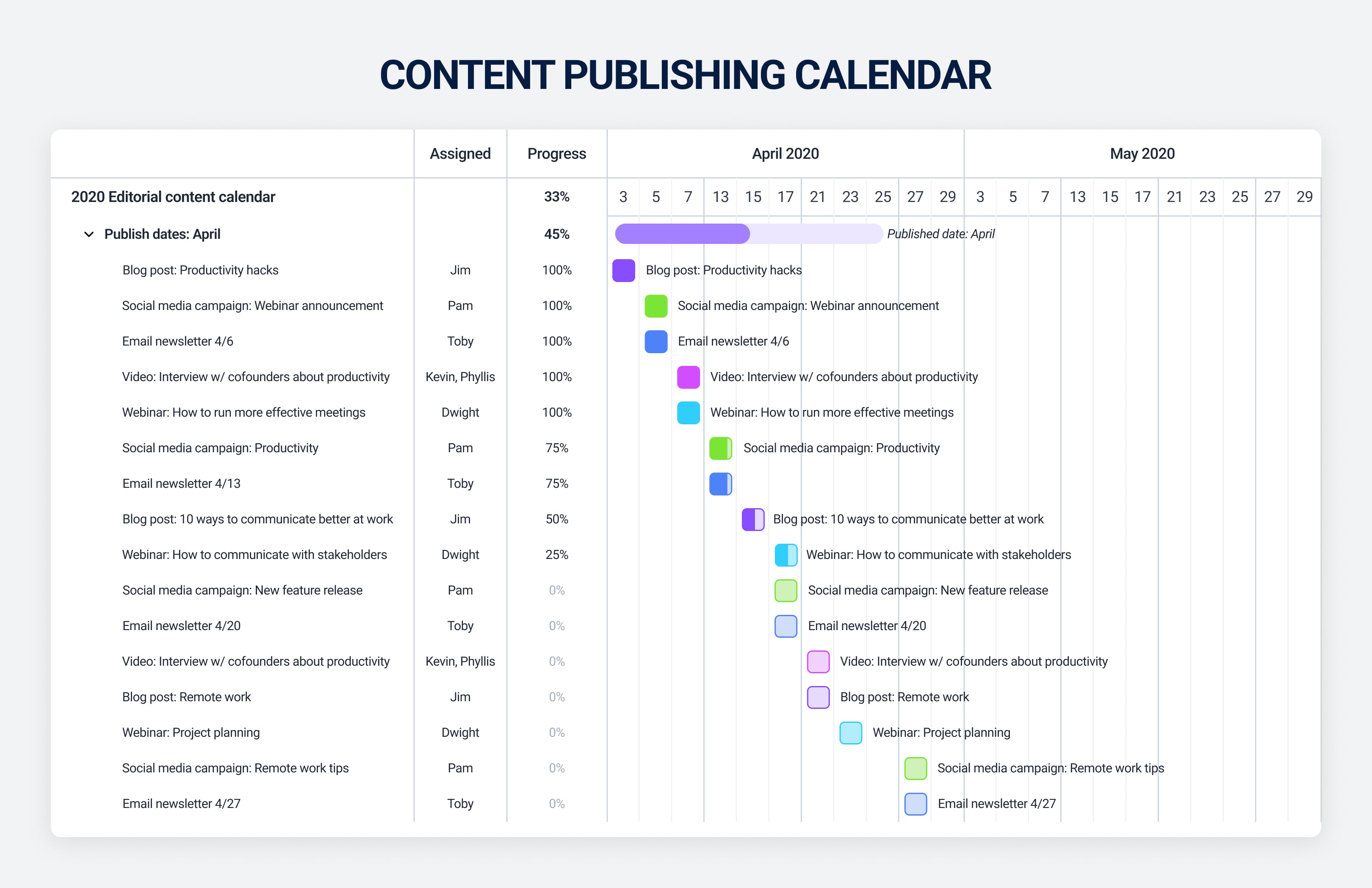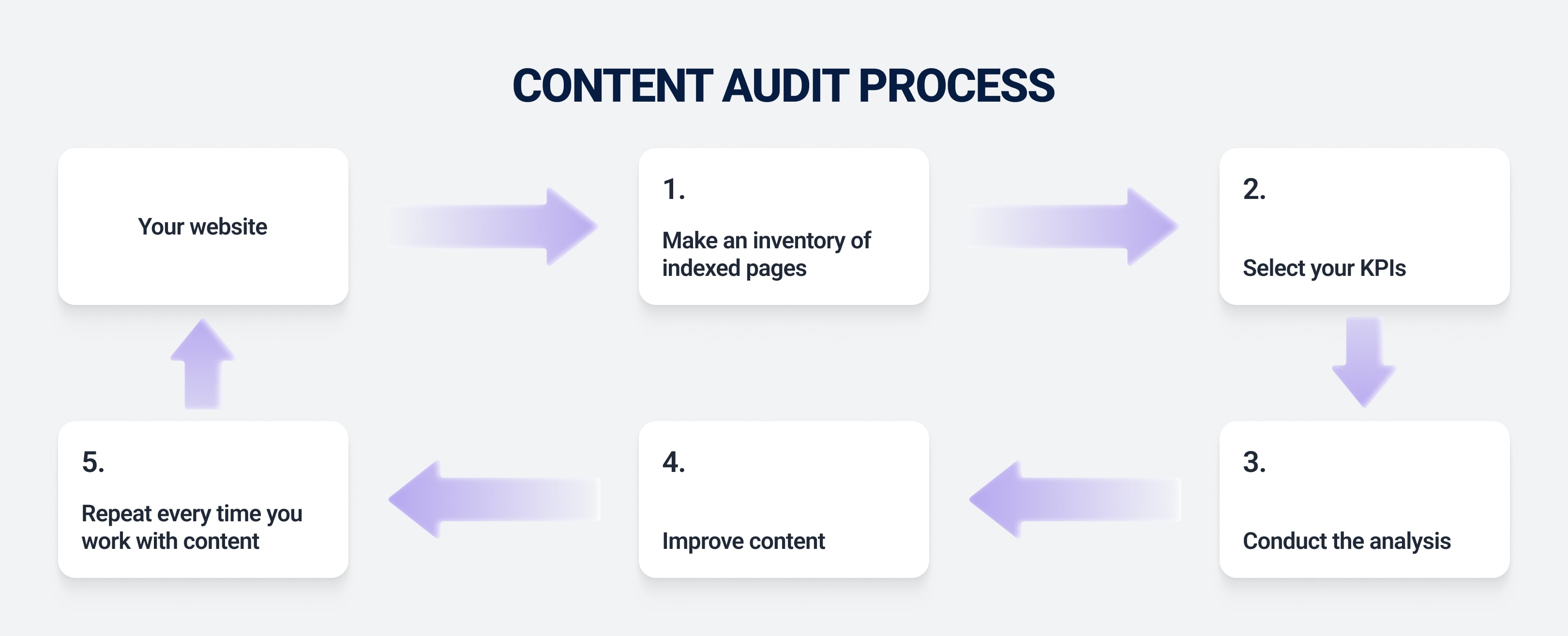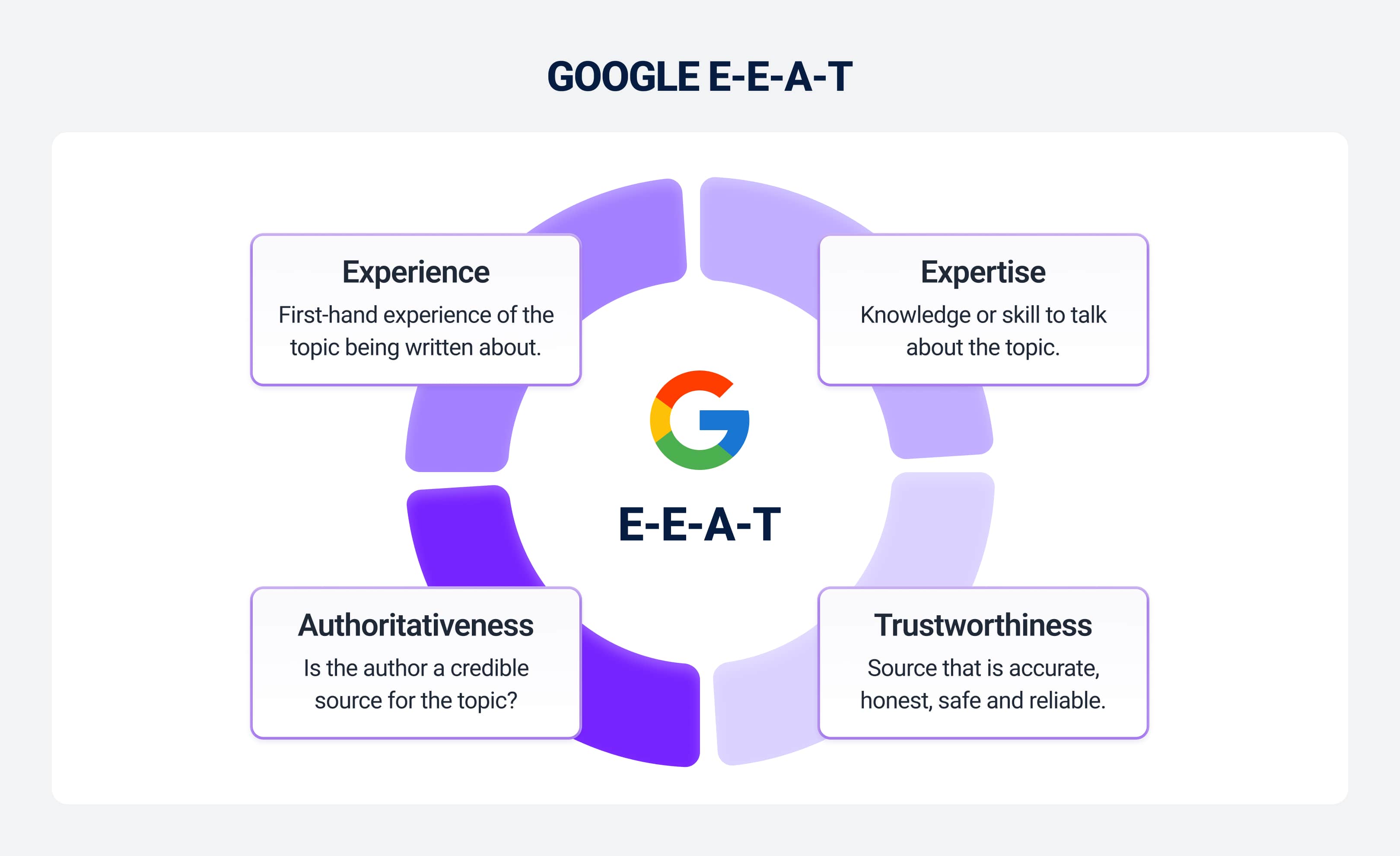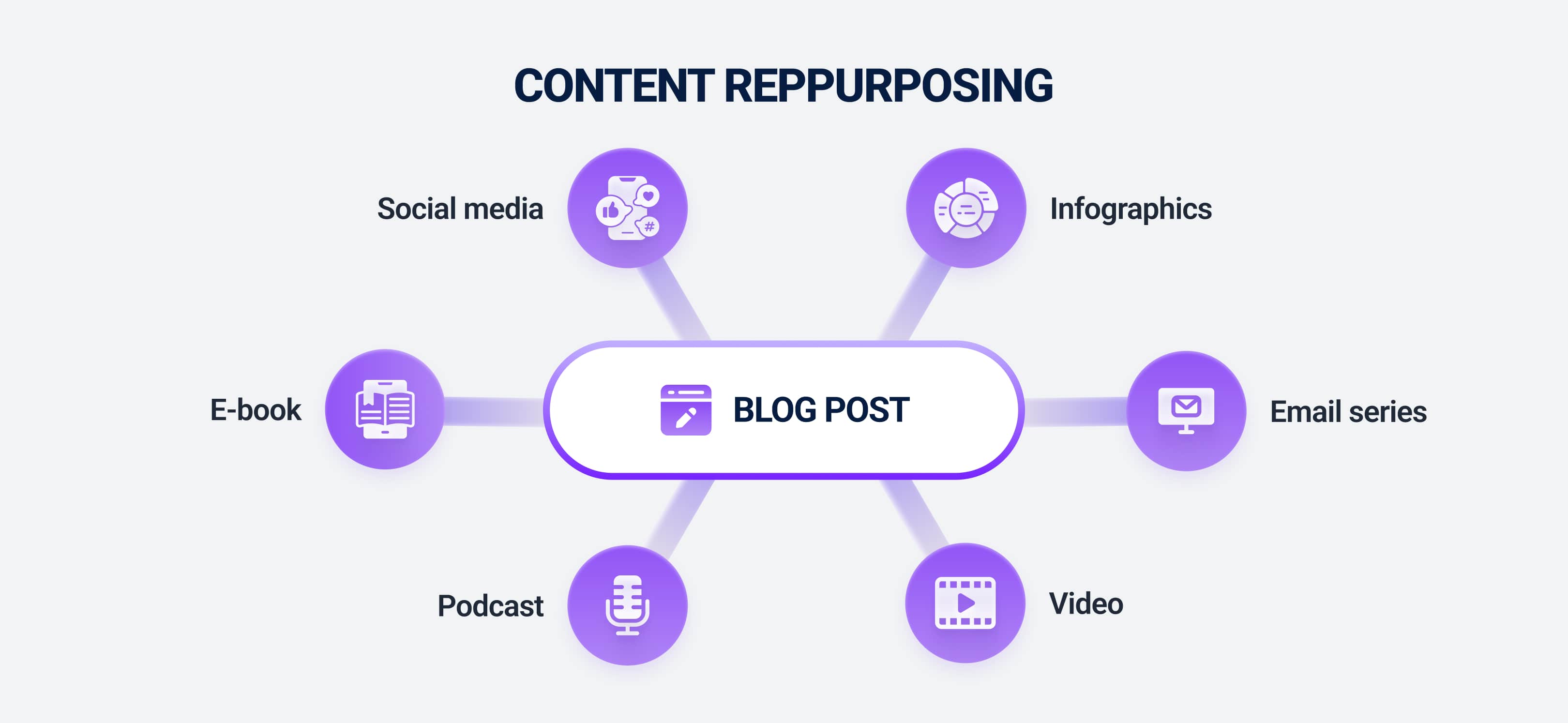No one said content marketing was easy. It can take many months of hard graft and error before businesses start seeing a positive ROI on their content efforts.
There are many potential content marketing challenges to contend with. “Dead” content that never sees the light of day. Low engagement. No conversions. Confusing workflows that slow you down. Each of these can kill a content marketing campaign.
If you’re currently facing one or more of these hurdles, or you’re simply starting out on your content marketing journey and want to know what lies in store, you’ve come to the right place.
Our content marketing experts are going to walk you through the main content marketing challenges they’ve faced in their many years of experience. Plus, they’ll let you in on dozens of proven tips and tricks to avoid them!
The Trap of Invisible Expectations
Perhaps the biggest content marketing mistake we come across is a lack of clear expectations. Business owners/marketing heads may know about the revenue potential in content marketing, but not understand its intricacies. Therefore, they set out with vague goals like “increase sales”.
The truth is, you need crystal-clear goals for your content marketing efforts, as well as clear expectations regarding your internal processes.
Content Isn’t Just a Tactic: It’s a Cultural Shift
The first thing to understand is that content isn’t just a clever way to drive traffic. It responds to a significant change in the way we all actually use the internet.
Paid search ads only work so well in 2025. People are wiser to advertising than they used to be, and they don’t always like it. “Transactional searches” (Google searches where people are actively seeking to buy something) only make up about 10% of all internet searches. In contrast, “informational searches” (where people are looking for educational material) represent about 80% of all searches.
Consumers want authoritative, trustworthy information from verified sources, not just ads. Content marketing fills that gap, while also cleverly guiding users more subtly toward buying.
Internal Misalignment No One Prepares You For
Clear processes are as important as clear goals. Many inexperienced business owners sadly assume a marketing team will be able to pull off content marketing from day one.
This often results in all kinds of complications and mix-ups. Here are some common examples:.
- Misalignment between marketing & sales - Marketing is creating top-of-funnel blog posts focused on broad brand awareness but Sales needs product-specific case studies to support the final decision stage of the buyer’s journey. Leads are getting handed off to Sales without proper nurturing.
- Conflicting brand messaging across channels - the social media team is using a fun, casual tone. The email marketing is stuck with a formal, corporate voice. Leads don’t feel they really “know” the brand.
- Unclear content ownership/approval process - a blog post is delayed by weeks because it's unclear who is responsible for the final review. This lagging production cycle leads to missed deadlines and even missed sales opportunities (especially in specific sales seasons).
- Lack of alignment on target audience - one team is developing content for SMBs. Another is targeting enterprise clients. Both are using the same channels and branding, so content ends up being contradictory.
The Burnout Loop of Content Teams
It’s not uncommon for content marketing efforts to falter within the first few months despite a strong start. The sheer amount of content online can “force” many teams to think far too much about how much they’re producing and not enough about what they’re producing.
Content teams, not just the writers, can completely burn out if you’re not careful.
The Myth of Constant Publishing
We hear it all the time: “you have to publish 3x a day to stay relevant”. Positing everyday can be a good goal to have, but you don’t need to start with that kind of pressure. Every piece of content you publish has its own lifecycle from ideation to editing and everything in between. It takes time.
“Great content” should be your goal, not “more content”. Great content is content that speaks to its target audience and fulfils the purpose you need it to, like securing demo sign-ups, for example. Ten pieces of content that do that are more valuable than 100 that don’t.
All too many businesses sit by while volume slowly takes over and obscures the actual strategy behind the content. This is bad for the creators, bad for your teams, bad for your bottom line.
Commit to a reasonable content schedule and slowly scale as your capabilities improve, like so:

Emotional Burnout and Creative Paralysis
Focused, successful content takes time to get right. If you force your content creators to churn out tens of thousands of words per week and measure their success in volume, they’ll lose focus.
Take the time to brainstorm high-quality content ideas that can really serve a purpose. Plus, consider when best to publish that content. For example, if you’re selling a seasonal Christmas product, it’s best to post related content in November and December, not in April.
Data Without Direction
Just as failing to incorporate data into your content decision-making can leave you stranded, using all the data you can without any clear reason can be equally deadly.
Data is your best friend, but it has to serve a purpose.
Misleading Metrics That Derail Your Strategy
There are dozens of content marketing metrics to keep an eye on. However, some are more important than others for specific content types or channels, and some are only worth monitoring in specific circumstances.
A “shiny” metric at first glance may actually hide a serious problem that could send your content strategy in the wrong direction. Here are some examples:
- Page views/traffic volume - high traffic may look great but it means nothing without conversions. The views could be coming from the wrong audience or bouncing quickly, which makes your traffic volume figure useless. Instead, focus on qualified traffic.
- Social shares/likes - these often give a false sense of reach as people may engage socially without ever reading or acting on the content. Plus, you could end up chasing that by producing clickbait that doesn’t serve long-term goals.
- Keyword rankings (alone) - ranking #1 for a keyword with low intent or no traffic doesn’t mean business impact. It could actually mean you’re wasting money on ranking without any return. It’s much better to look at click-through rate (CTR) and organic conversions.
- Email open rates - open rates are entirely dependent on subject lines, not content. If you chase open rates, you could end up in the trap of producing gimmicky subject lines or misinterpreting engagement.
- Number of posts published - knowing how many things you’ve published tells you effectively nothing. More content is not better content. You should be focusing on content performance per post instead.
- Bounce rate (without segmentation) - it’s extremely useful to know your bounce rate, but if you don’t know who’s leaving and why (some pages, for instance, are actually meant to be “one-and-done”, like pricing), you risk misclassifying successful content as failing.
When Analytics Conflicts with Intuition
It’s common for content to perform wildly different from how you expected it to. That can mean it outperforms your expectations. It can also mean it disappointingly underperforms. In both cases, you should seek to understand why.
Here are a few examples:
- You think a topic will perform, it doesn’t - the thought leadership article you thought would do well has actually fallen flat. This doesn’t mean the article was bad. It could just be ahead of its time or targeting a niche not captured by current SEO efforts.
- Data says something’s working, it feels off - a blog post is driving tons of traffic, but your gut says the quality is off-brand or misaligned. It could be that the post is ranking for the wrong keywords or attracting unqualified audiences.
- Analytics suggests killing a long-time content asset but it still feels valuable - an evergreen page that has historically built trust with high-quality leads is now seeing low traffic. Data doesn’t always reflect long-term or relationship-driven value, especially in B2B or high-consideration purchases.
In all of these cases and others like it, you have to interrogate the data to find out why it didn’t meet your expectations and build from there.
GROW YOUR INSTAGRAM FOLLOWING VIA OUR CELEBRITY CAMPAIGNS
Leverage the power of the worlds A-list celebrities to grow your Instagram every month
VIEW CAMPAIGNSThe Content Graveyard Problem
Did you know that over 96% of content gets absolutely no traffic at all from Google? It can be disheartening to know just how much effort goes into content that goes nowhere and achieves nothing. This is what we call the “content graveyard”
You can fill your blog with ten posts a day, but zero traffic is zero traffic. Let’s break this problem down:
What Happens to Old Content No One Maintains
You might think old content simply sits there, harmless. That’s not always the case. Old, poorly-maintained content can quickly become a liability, or worse, a drag. Here’s what typically happens when content is left to age without updates:
- Search rankings decline - Google prioritizes freshness and accuracy. Older content is often outdated, so it slips in rankings, losing traffic to more current sources.
- Brand trust erodes - readers hate to come across broken links or obsolete advice. This could make them question your expertise entirely. Maintaining content is an easy way to keep your brand authority strong without necessarily creating a whole new piece of content.
- User experience drops - old content may include inactive promotions or irrelevant product mentions that leave visitors confused or frustrated, and much less likely to convert.
- SEO opportunities slip by - older content simply may not align with how people search today. You could be sitting on "almost-winning" content that could be ranking better if optimized with fresh keywords and structure.
Lack of Content Auditing Processes
A content audit tells you exactly what’s working (or not working) and why. Here’s what happens if you don’t have a watertight content auditing process:
- Outdated claims hurt trust
- You miss conversion opportunities
- Duplicate or competing content confuses search engines
- You waste effort on irrelevant content
- Internal misalignment becomes a problem
The best way to avoid these problems and others is to develop a strong audit process. That’s about more than just listing URLs. It’s about strategic evaluation plus decisive action.
Here’s what a winning audit process looks like:

- Inventory all content - create a full list of all published content as well as its contents (like URLs, titles, publish/update dates, traffic, backlinks).
- Define evaluation criteria - you should assess performance, but also accuracy, brand fit, SEO alignment, and conversion readiness.
- Tag content with clear actions - decide what to do with each piece of content. Tag like so:
- Keep
- Update
- Consolidate
- Redirect
- Delete
- Prioritize by business impact - focus first on areas that need attention, like high-traffic, low-conversion pages, then move down to lesser issues like mid-performing posts that could rank higher.
- Schedule recurring audits - we recommend a full annual audit and smaller quarterly or monthly audits so you don’t take your eye off the ball.
SEO vs Storytelling Tug-of-War
For many inexperienced content marketers, it can seem there’s contradictory advice: “tell an amazing human-first story” vs. “optimize your content for search engines”. If you’re writing a beautiful piece of content for human readers, why weaken it by pleasing an algorithm?
Here’s where SEO can become a problem:
The “Over-Optimization” Dilemma
Content briefs that are too heavily focused on SEO can choke creativity. In an effort to rank highly, inexperienced strategists may be willing to let the human side fall by the wayside.
While this can lead to high CTR, that traffic won’t convert. This is content that’s perfected for the algorithm but which puts human buyers off:

Here’s an example of powerful-story-turned-SEO-Frankenstein:
A mid-size health tech company publishes a blog titled “How My Mother’s Diagnosis Changed the Way I Build Products". It’s a deeply personal piece that goes viral and earns a ton of valuable backlinks.
Six months later, an SEO audit flags that:
- The post wasn’t targeting high-volume keywords.
- The headline didn’t include product features or brand terms.
- It lacked optimized headers and internal links.
The content team decides to do some work. The new title is “How Our Healthcare Management Platform Empowers Oncology Patients". The personal parts of the story were reduced to a paragraph and new keywords were shoehorned in.
The result?
- SEO traffic barely increased, because the new version competed with a dozen similar pages.
- Engagement plummeted. Users bounced faster and time on page dropped.
- The original backlinks were removed or updated.
The brand had swayed from its brand voice and paid the price.
Human Content That Fails to Rank
The internet is filled with incredible human content that never gets noticed. Some content teams, especially for charities or human-first businesses, have a hard time balancing SEO with authenticity.
However, it’s important to know that SEO isn’t everything. Google’s E-E-A-T (Experience, Expertise, Authoritativeness, and Trustworthiness) ranking system also prioritizes credible, helpful content, not just keywords.
Try to use keywords subtly and build from there while also focusing on the other aspects that set your brand apart.

Distribution Fatigue
Just like with creating content, distributing and promoting content also comes with its own challenges. Many marketers feel they’re stuck in a hamster’s wheel with no end in sight. However, this feeling could indicate you’re doing it wrong.
The Truth: “Great Content Doesn’t Market Itself”
It’s hard enough to create engaging, original content, let alone market it. However, you must put equal, if not more, effort into this part of the process.
The internet is overflowing with solid content. Without deliberate, sustained distribution, even your best work can die in the dark. The pressure to be everywhere (LinkedIn, email, Medium, industry Slack groups, newsletters, even Threads) can quickly build. When a post doesn’t take off, it's tempting to blame the content. But often, it’s a distribution problem dressed up as a content problem.
The key thing to remember is that distribution isn’t just a task to check off after publishing. It’s actually a core part of the content strategy, and one that needs serious planning and tools.
When Repurposing Feels Like Repeating
Repurposing is hands-down one of the best ways to increase ROI on a single piece of content by turning it into multiple assets. However, it can end up feeling like you're saying the same thing on loop, slightly reworded for each platform. The result? A diluted message.
However, there’s a way around this. If you’re stuck in that loop, it could be that you’re misunderstanding what repurposing is to begin with.
Repurposing isn’t copy-pasting. It’s reframing for:
- New context
- New moments in the buyer journey
- New emotional angles
When it feels stale, it usually means you're repeating format, not rethinking perspective. Try to approach repurposing like a creative act, not just a mechanical one!

Budgeting Blind Spots
Money can become a real sticking point in content strategy if not carefully handled. Not only do businesses often run out of marketing money, but they waste a lot by budgeting poorly to begin with.
Underestimating the Real Cost of Good Content
How much does content really cost? After all, it’s just a blog post or LinkedIn caption, right? Wrong.
Consistently producing top-tier content that converts can be expensive. Behind every piece of truly effective content is time (strategy, research, revision), tools (CMS, SEO software, analytics), and talent (writers, editors, designers, subject matter experts).
Then, add in “hidden” costs like distribution, content audits, performance tracking, and creative refresh cycles. Suddenly, a $100 blog post can cost 10x more.
Unfortunately, this is why many small businesses turn to “cheap” content solutions from inexperienced agencies. This can be tempting, but it almost always ends up costing you more in the long run. Their content is unlikely to match your brand voice and often gets penalized for keyword stuffing.
Inconsistent Investment Kills Progress
Content budgets often swing with the winds of leadership change and quarterly numbers. However, content marketing requires foresight and consistency to work.
When investment is inconsistent it disrupts the compounding power of content:
- Momentum evaporates
- Rankings slowly slip
- Audiences forget your brand
Content rewards patience and consistency, not one-off sprints.
The Long Game No One Warned You About
There are no quick wins in content marketing. Studies suggest it can take at least six to twelve months to see positive ROI on content marketing efforts.
That’s because great content marketing relies on high-quality content that takes time. It’s a compound interest game. Just because you’re not seeing immediate results doesn’t mean you’re not heading in the right direction!
What You Can Do About It
Luckily, there are several things you can do to speed up the content marketing process and see quicker results:
Build Content Strategy as a System, Not a Calendar
A content calendar shows you what you're publishing. A content system shows you why, how, and what happens next.
Calendar tools are essential, but they only offer deadlines, not outcomes. A system involves:
- Defined goals
- Buyer journeys
- Content mapping
- Repurposing rules
- Governance
- Distribution loops
- Feedback mechanisms
Systems don’t just save your team time, but also make scaling at speed possible.
Choose Metrics That Drive Business, Not Just Metrics
Think about what actually moves the needle. It’s not pageviews and impressions. You want content that generates leads and shortens the sales cycle. So, your analytics should always be tightly tied to those outcomes.
Never forget that your best content might not be the content with the most traffic. It might be a low-volume post that consistently drives qualified leads. Fail to measure it properly and you could miss it entirely!
Create a Feedback Loop Across Teams
Great content isn't created in a vacuum. It’s informed by many other aspects that aren’t always obviously linked, like:
- Sales objections
- Customer questions
- Product updates
- Support tickets
You’re left guessing if these other voices aren’t informing your content strategy. The best content ideas usually live in someone else's inbox or sales call transcript. You just need a system to surface them.
Prioritize Creator Wellbeing
Content creators themselves are under a lot of pressure as the need for top-quality content marketing surges. Burnout is real. Sadly, that’s often ignored because content work is seen as “soft” or easily replaceable.
Your content is only as strong as the people behind it. Protect their focus. Give them room for deep work. Set realistic expectations.
Burned-out creators don’t produce better content, just mediocre content faster.
Reevaluate Content Formats Based on Reality
It’s good to spread your content marketing across multiple formats, but you don’t have to spread it across all formats. The most important thing is to find the formats that work (by converting leads) for you.
Don’t forget that every format has its own hidden costs in time, energy, tools, and audience expectations. Trying to reach too far can leave you burnt out.
Sometimes the most effective format isn’t the trendiest. It’s the one you can execute consistently and improve over time.
Final Thoughts
Effective content marketing is an unmissable opportunity to drive organic traffic and boost ROI. However, it's filled with potholes and hidden traps. To sum them up one last time, the main challenges are:
- Unclear expectations
- Creator burnout
- Data without direction
- Underperforming content
- SEO vs storytelling struggles
- Inefficient budgeting
- The waiting game
However, with the right tools and strategies, you can overcome them and build a world-class content marketing system that delivers where you need it to.
Experience alleviates content marketing challenges. The problem is, you might not have that experience yet. A simple solution is to partner with a trusted content marketing agency like Influize.
Our team has the tools and expertise already in place to put your content marketing strategy into action and get quicker results at lower cost.

